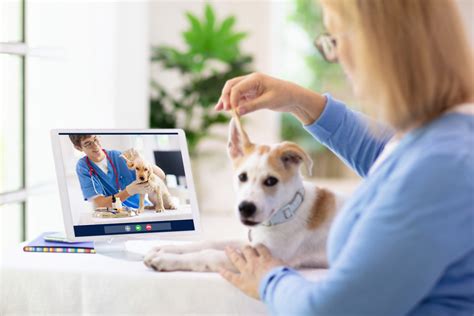Introduction

Telemedicine, the remote delivery of healthcare services via telecommunications technology, is rapidly transforming the veterinary landscape. While it offers numerous benefits for pet owners, it also has certain limitations that must be considered.
Convenience and Accessibility
One of the primary advantages of telemedicine is its convenience. Pet owners can connect with veterinarians from anywhere, at any time, without having to travel or physically bring their pets to a clinic. This is particularly beneficial for those living in rural areas, those with mobility issues, or those with busy schedules.
Increased Availability
Telemedicine expands access to veterinary care, especially during emergencies or after-hours. With traditional veterinary clinics often closed outside of regular business hours, telemedicine provides a lifeline for pet owners facing urgent medical situations.
Remote Monitoring
Telemedicine also enables remote monitoring of pets’ health. Pet owners can send videos, photos, and other data to their veterinarians, who can assess the pet’s condition remotely. This allows for timely diagnosis and treatment, even in cases where in-person visits are not possible.
Limitations of Telemedicine for Pets
Despite its advantages, telemedicine for pets also has several limitations:
1. Physical Limitations:
a. Lack of Hands-On Examination: While telemedicine can provide valuable insights, it cannot replace the hands-on examination of a veterinarian during an in-person consultation. Physical examinations are essential for accurately diagnosing and treating medical conditions, especially those requiring immediate attention.
2. Equipment Limitations:
a. Technical Requirements: Telemedicine requires access to smartphones, computers, and good internet connectivity. Lack of reliable technology can hinder effective consultations and limit the ability to provide remote care.
3. Information Accuracy:
a. Limited Information Collection: Telemedicine consultations rely on pet owners’ ability to accurately describe their pets’ symptoms and provide relevant information. Inaccurate or incomplete information can lead to misdiagnosis or inappropriate treatment recommendations.
4. Patient Selection:
a. Not Suitable for All Cases: Telemedicine is not appropriate for all veterinary cases. Serious medical emergencies, surgical procedures, and complex diagnostic tests require in-person consultations and hands-on care.
5. Lack of Personal Touch:
a. Emotional Connection: In-person consultations allow veterinarians to establish a personal connection with both pets and pet owners. Telemedicine limits this interaction, which can impact the veterinarian’s ability to fully understand the pet’s needs and the pet owner’s concerns.
Overcoming Limitations
Despite these limitations, several strategies can be employed to mitigate their impact:
1. Integration with Traditional Care:
a. Complementary Service: Telemedicine should complement, not replace, traditional in-person veterinary care. By integrating the two approaches, pet owners can receive the best of both worlds: the convenience of telemedicine and the hands-on expertise of an in-person examination.
2. Technology Improvements:
a. Advanced Diagnostic Tools: Technological advancements, such as portable diagnostic devices, can enhance the capabilities of telemedicine. These devices can allow veterinarians to remotely perform limited physical examinations, reducing the need for in-person consultations for certain conditions.
3. Standardization and Guidelines:
a. Clear Communication Protocols: Establishing clear communication protocols and guidelines for telemedicine consultations can improve the accuracy and reliability of information collected. These protocols should outline the types of cases that are appropriate for telemedicine and the limitations of this approach.
4. Patient Selection Criteria:
a. Pre-Screening: Pet owners should be pre-screened to determine if their case is suitable for telemedicine. This can be done through online questionnaires or initial phone conversations. Pre-screening helps ensure that patients receive the most appropriate level of care.
5. Hybrid Approach:
a. Combination of Remote and In-Person: A hybrid approach that combines telemedicine with in-person consultations can address the limitations of both approaches. This allows for remote monitoring and preliminary assessments while also providing the option for hands-on examinations when necessary.
Conclusion
Telemedicine offers significant benefits for pet owners, including convenience, increased availability, and remote monitoring. However, it also has limitations that should be considered, such as physical limitations, equipment requirements, information accuracy, patient selection, and lack of personal touch. By integrating telemedicine with traditional care, improving technology, establishing standardization and guidelines, implementing patient selection criteria, and adopting a hybrid approach, these limitations can be overcome, allowing telemedicine to play a transformative role in veterinary care in 2025 and beyond.





















